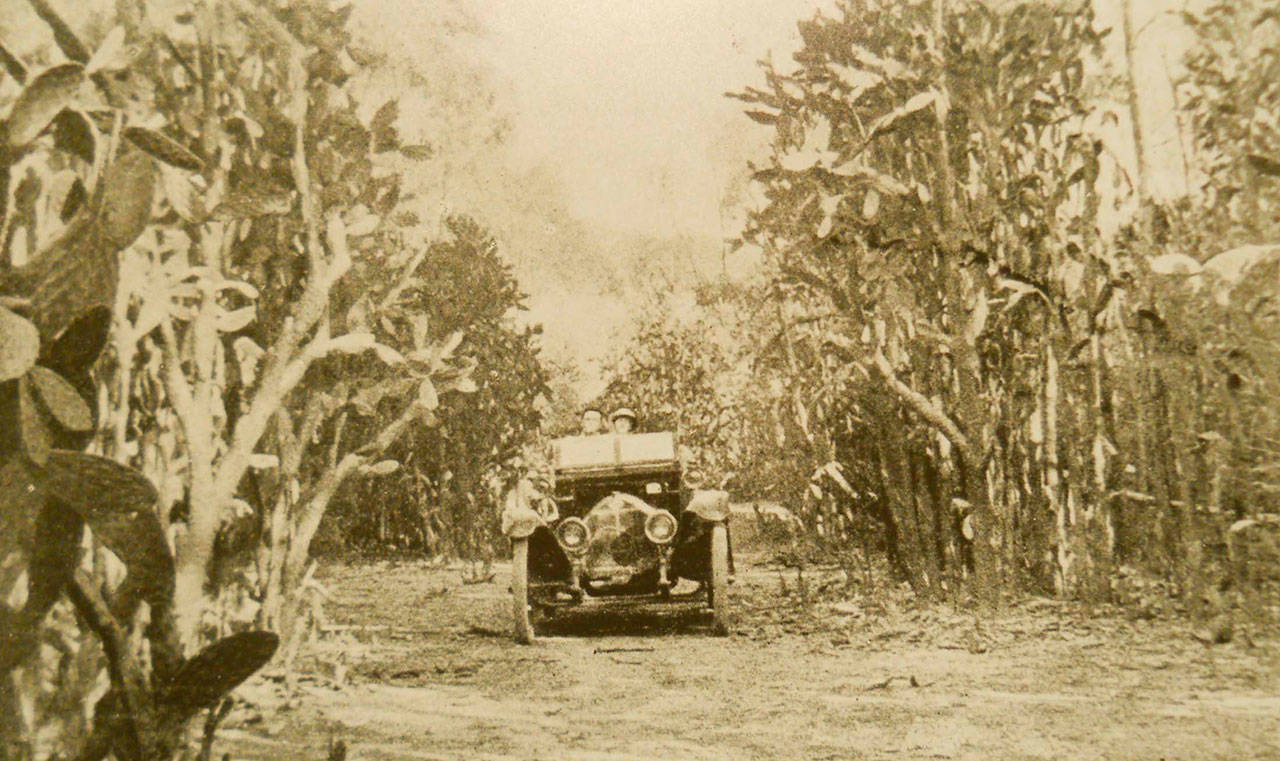Australia was in a pickle. Once excited to have their first export, the brilliant red dye produced by beetles, Australians found themselves overrun by the insects’ food, the prickly pear cactus, according to islander Terry Domico, author of “The Great Cactus War.”
“This story amazed me because it kept unfolding and revealing more,” he said, noting that the book took five years of research and 300 hours of interviews.
At his book launch at the San Juan Island Library, Sept. 7, at 7 p.m., Domico will discuss the story of a plant that tried to take over a continent. The event is co-sponsored by Griffin Bay Books. Domico’s foray into the cactus saga began as a botanist studying a native miniature prickly pear. Due to that work, he was invited by the Smithsonian Institute to study an invasion of cactus eating moths.
The story began innocently enough. During the 15th and 16th centuries, the English desired red dye for their red coats, and the Spanish had discovered a secret. South Americans ground up a native insect, the cochineal beetle, which lives and feeds on prickly pear cactus, to make a red dye unlike anyone had ever seen. Spain, understanding the value of such a color, held a monopoly on the cochineal dye trade for 250 years.
The English became one of their top buyers, Domico said. Even when the countries were at war, England didn’t boycott the red dye trade with Spain.
“It was like the English would say, ‘Stop shooting, can we buy some red dye please?’” he laughed.
Around the late 1700s and early 1800s, English spies began to figure out the dye originated from a South American beetle that ate prickly pear cactus. Australia was still under British rule, and England decided, given Australia’s climate, it would be the perfect place to begin a cochineal market, according to Domico. Unfortunately, the insects died shortly after being brought to Australia, and the prickly pear cactus was discarded into the wilderness. Then in the 1900s, disaster struck.
“It was like a slow-moving tsunami,” Domico said.
The plants, without any predators to keep them in check, grew to be 30 feet tall. Prickly pear forests slowly took over the Australian outback, enveloped farms and swallowed entire towns. At its peak of destruction, the plants took over 60 million acres.
“To put that in perspective, it’s about the size of New York, New Jersey, New Hampshire, Delaware, Massachusetts, Connecticut and a large part of Pennsylvania combined,” he said.
The cactus, according to Domico, is incredibly tenacious. It can take root easily, he explained. When a farmer attempted to cut one down, any pieces dropped became a new plant. Poison was ineffective since the plant has a mechanism that enables the cactus to cut off circulation to each pad to keep the poison from spreading throughout its system. Not only that, but the poisoned pad will fall to the ground only to recover and grow into another cactus.
The Australian government, Domico said, didn’t help. Busy with World War I, lawmakers simply ordered people to keep their land cleared. This was such a backbreaking, intensive, often futile task, landowners gave up and moved to the cities. Chinese laborers were huge contributors to Australia’s history due to their work cutting, stacking and burning the cactus.
As World War I ended, soldiers lucky enough to survive, returned to find their homes, even their towns, no longer existed because the cactus had taken over. Even more heart-wrenching, Domico added, the soldiers had no idea where their families had gone.
Around 1925, Australian researcher Alan Dodd finally figured out there was a moth, Cactoblastis Cactorum, that was very effective in keeping the cactus in check. Billions of moths were hatched. The insects decimated the prickly pear. The program was so successful other former British-Empire countries having problems with the cactus, including India, Cuba and even Hawaii, brought in the moths, Domico said. Australia’s cactus forests disappeared, as did a wall of prickly pear planted by Cuban dictator Fidel Castro, to keep his citizens from escaping.
In the United States, the cactus moth originally arrived in Florida and appears to be traveling westward, toward Texas. Should the insect reach desert ecosystems, some with rare types of prickly pear, those habitats could change forever, according to Domico.
Several solutions have been suggested. Using traps similar to those used locally to fight the gypsy moth, using a sterilization technique to keep the moths from reproducing, or introduce a wasp native to Argentina that kills moth.
“We have some wasps already,” Domico said, explaining they are kept underground, in an extremely safe place to keep them from being accidentally released.
“We are terrified they might escape because we don’t know yet what will happen if they are released,” he said.
Meanwhile, during his last trip to Australia, Domico listened as a radio anchor announced the government has declared the prickly pear a weed of national significance. The Cactoblastis has stopped eating much of the cactus, and it is once again taking over the countryside.
“The minute you introduce a species somewhere, it automatically becomes part of that ecosystem and begins to evolve,” Domico said, explaining species evolve constantly. With only one predator, a quickly evolving plant like the prickly pear has grown resistant to the moth.
“The cactus currently has taken over an area in mid to Southern Australia that is equivalent to the combined states of Washington, Oregon, California, Idaho, Montana, Nevada, Arizona and maybe even New Mexico,” he said.
The book will be featured in this year’s National History magazine’s October issue. For information, visit www.sjlib.org/events/2018-09.




